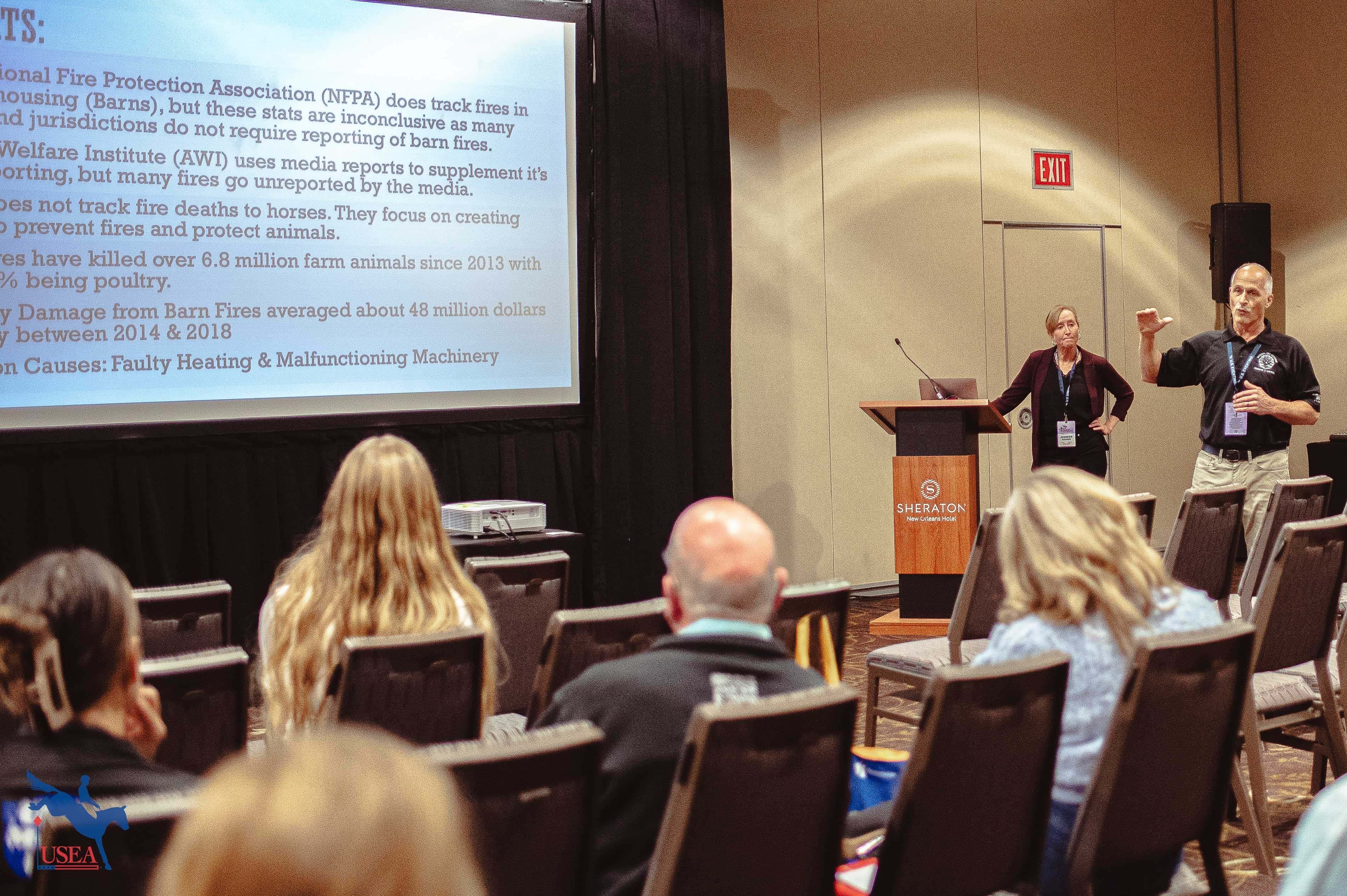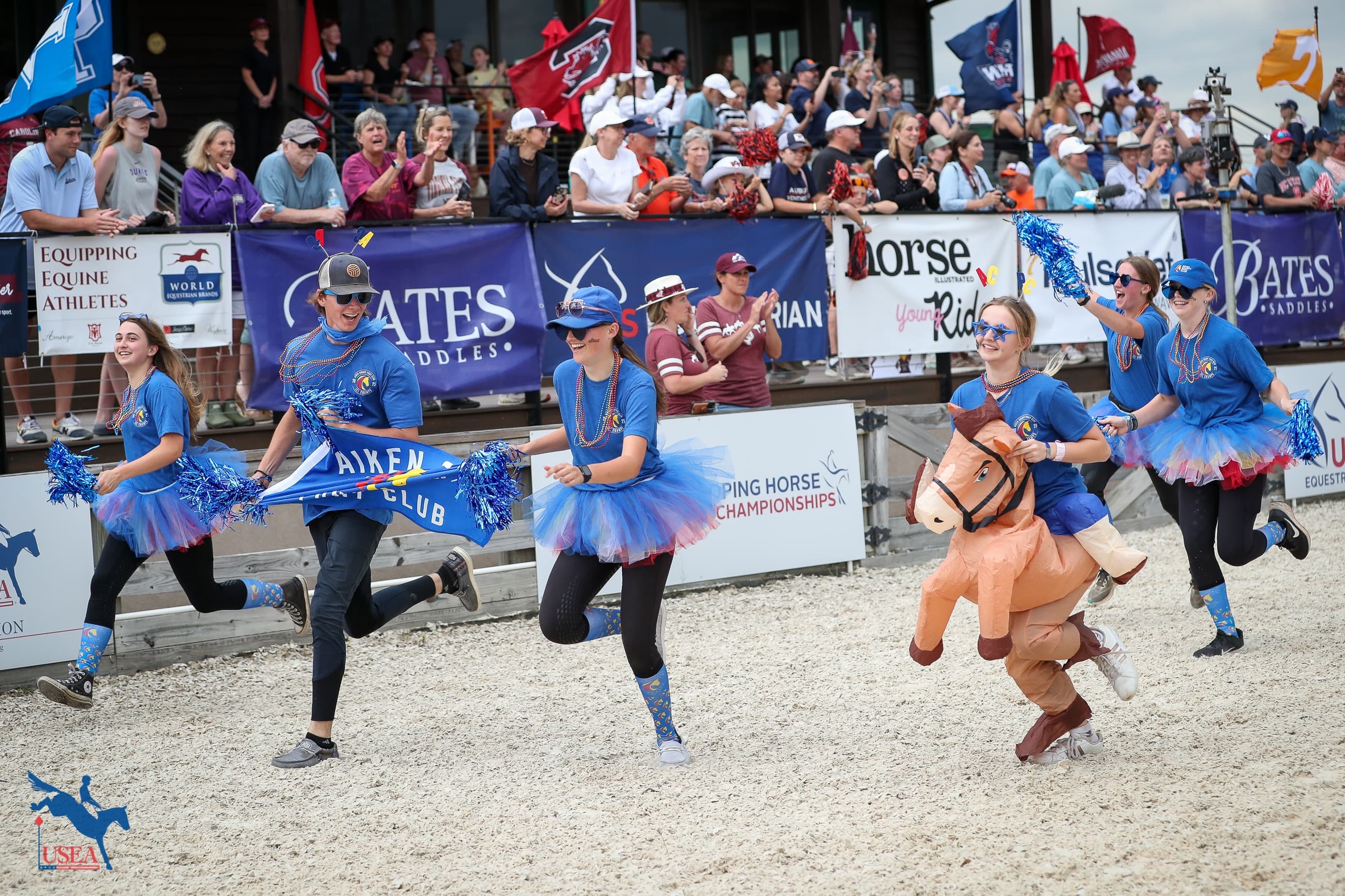Forward Riding is Key on Day Two of the 2018 Educational Symposium
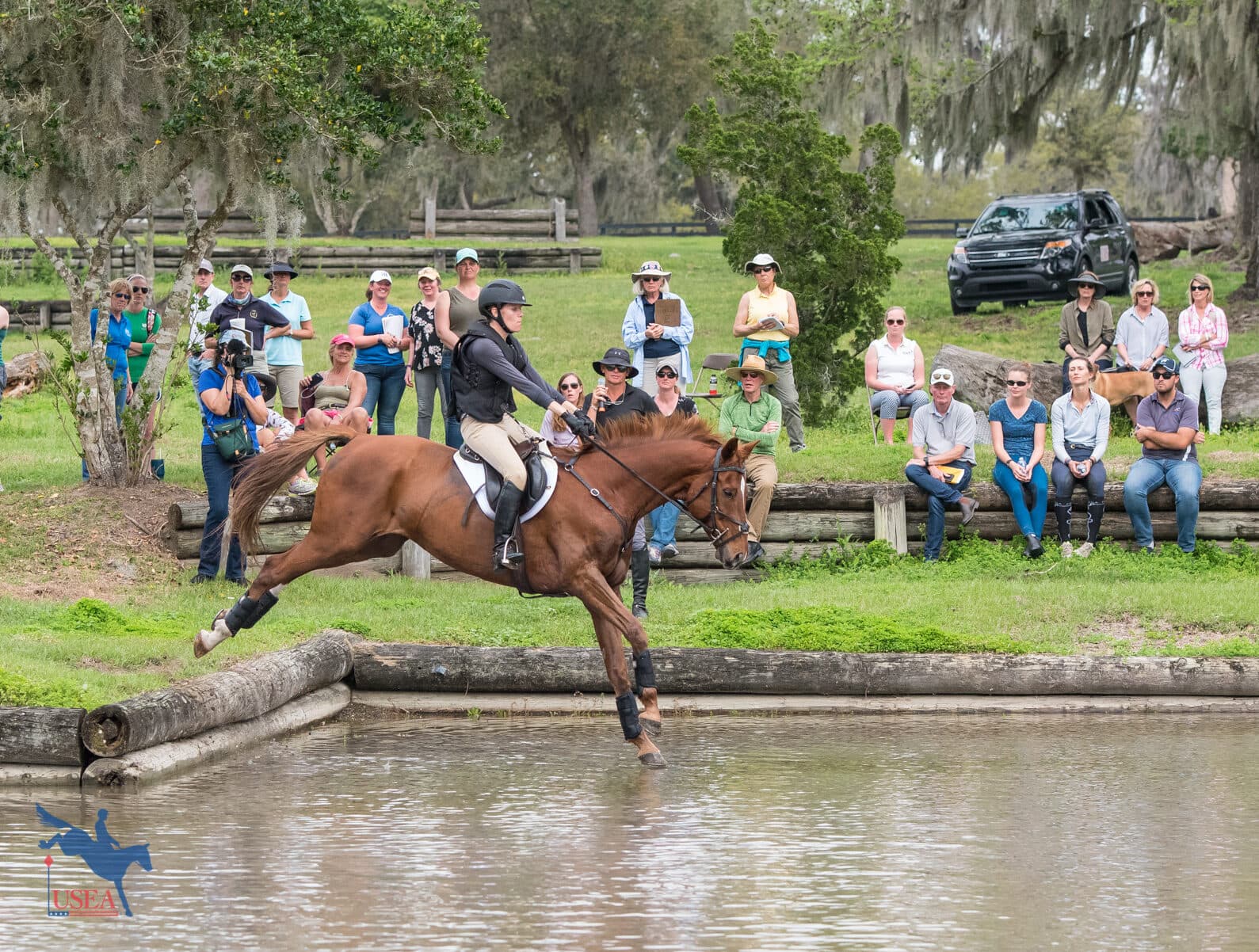
Day two of the 2018 USEA Educational Symposium at Longwood Farm South in Ocala, Florida again featured clinicians Leslie Law and Kai-Steffen Meier as they conducted the second day of the Instructors’ Certification Program (ICP) Symposium. The Young Event Horse (YEH) Symposium will take place on Wednesday and the Future Event Horse (FEH) Symposium will follow on Thursday.
This year’s ICP Symposium is focusing on the riding and training of the young event horse in light of the two new ICP certifications: the YEH Instructor and YEH Professional Horse Trainer certifications. Yesterday’s sessions were devoted to flatwork for the young event horse, while today’s sessions covered work over fences, both for show jumping and cross-country.
Building on their lessons from the first day of the ICP Symposium, both Law and Meier emphasized the importance of making sure each horse was adjustable within the gaits and moving forward in front of the rider’s leg. “Yesterday I talked about how you improve the working gaits, and as I said when it comes to young horses, it’s first off finding their natural balance and finding their rhythm and then you can begin with jumping jumps out of that balance and out of that rhythm,” said Law. From there, it’s about teaching the horse adjustability. “If you can lengthen and shorten the stride, you’re going to get to that distance, and you can do it within the rhythm. Obviously young horses find that difficult, and that’s part of the training and what we develop as we go along and as they become physically and mentally strong enough to cope with that.”
Meier started the first and youngest group of horses of the day out riding over four poles laid out on a circle. Meier had the riders go from the walk to the trot, and then begin to move their horses a little forward and a little backward to establish their connection and encourage the horses to be more adjustable. When the riders progressed to the canter and some horses struggled to maintain their rhythm, Meier quipped, “It’s four poles on the ground but it can cause a lot of trouble.” He continued seriously, saying, “The moment we get rhythm with the horse, the exercise gets much easier. It’s about keeping the rhythm and the line. If you have a good rhythm, the distance will come.” For the horses that took to the exercise more easily, Meier emphasized that it’s the rider’s responsibility to keep the horse moving forward, saying “The [horse’s natural] canter is already good, but it’s your responsibility to put energy into it.”

The group progressed to cantering two poles on a related distance, with the riders working to develop a forward pace. “You want to have the same canter from the turn in front of the first pole to the turn after the last pole,” said Meier. “Don’t feel like ‘Ooh, I did it’ until after you’ve done it.” From there the group moved on to a grid with cross-rails and then small oxers. Meier added placing rails between the fences to help the horses keep their forward rhythm. “If I add poles between fences to help establish a rhythm, the rest of the exercise comes easier. It’s good to work with poles in between the fences because it helps with the balance and keeps [the horse] uphill.” Meier added that the next step for this youngest group of horses would be to adjust the distances of the grid just slightly to begin to teach the horse how to adjust his stride accordingly.
With the second group of horses, Law built on the groundwork that Meier laid out with the first group. His first step was to have each of the horses and riders move their horses forward and back within both the trot and the canter to establish that the horses were in front of the riders’ legs. “As you go forward, you still have to think of the balance,” remarked Law. “There are two long sides and two short sides, use the corners to make them supple and the long sides to keep them straight.” Law also pointed out that the forward and backward exercise is about the length of the stride, not the horse’s speed, because, “changing the speed changes the rhythm, and we don’t want that.”
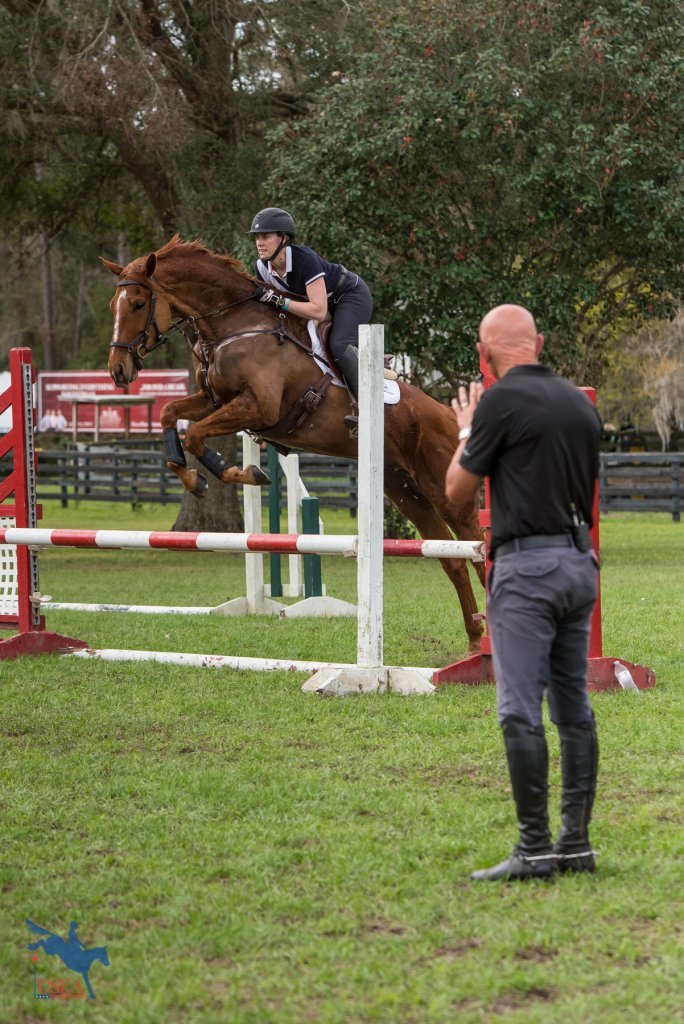
Law set up a series of trot poles to a cross-rail to start, asking all the riders to transition to the walk after the last fence of the grid. “We want to keep training the horse after the jump,” he pointed out. “It’s teaching the horse to rebalance after the fence.” Once the grid had been built up to include two oxers in addition to the first cross-rail, Law brought in the distance between the second and third elements of the grid. “We want the horse to learn to land and shorten their body and their stride while still keeping the distance honest. The idea is we’re trying to work the horses but be honest to them.” He insisted that it’s paramount with young horses to always be increasing their confidence, never asking them to do too much.
The final group of the morning was made up of 6- and 7-year-olds, and Meier increased the difficulty of the exercises yet again, saying he was going to “take [the horses] to the gym.” He set up a grid with placing rails before and after each fence to improve the adaptability of the horse’s stride. Throughout, he was looking for the horses to demonstrate rhythm and straightness. Once the grid had been built up to two verticals and two oxers, each one stride apart, Meier began to play with the heights of the jumps and the distances between them. By increasing the height of the second vertical, for example, he could encourage a quick horse to jump up and around the fence. By stretching the distance between that vertical and the following oxer, he could ask the horse to then stretch out and over the jump. Ultimately, moving between both shapes within the same exercise helps strengthen the horse’s back and reinforce the importance of adjustability.
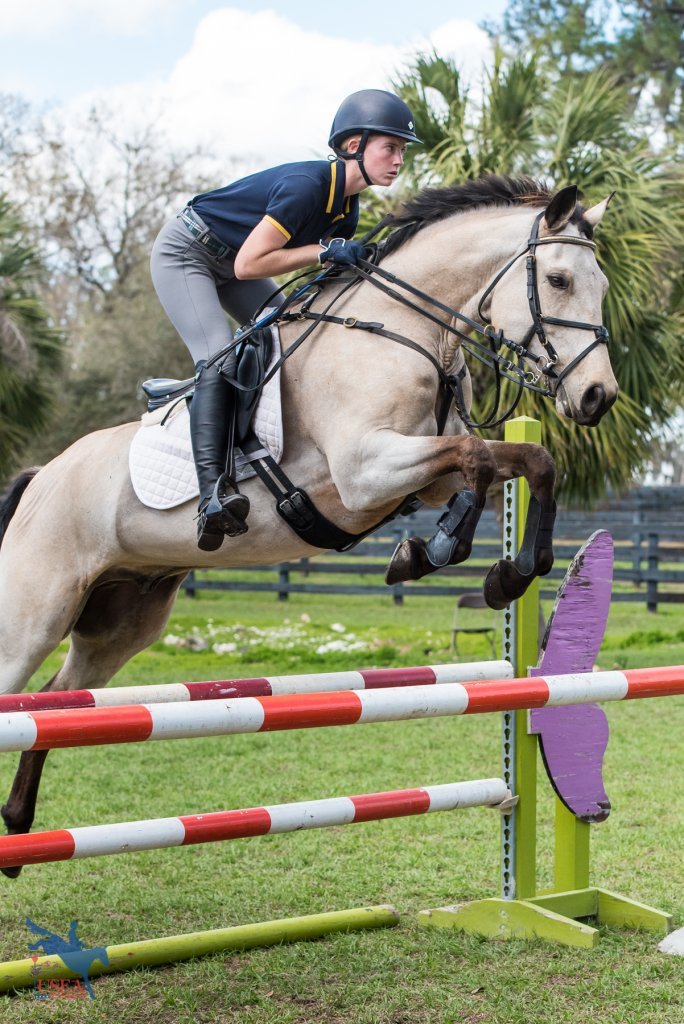
Both Law and Meier pointed out during the course of the morning the importance of not doing too much in one session. “These young horses only have so much gas in them and once you go past that you’re not teaching them anything, you’re creating a problem for yourself,” said Law. Meier agreed, saying, “We need to be careful with [these exercises] because we don’t realize how hard it is for the horse. We need to make sure we don’t do too much in one session.”
In the afternoon, the crowd moved down to the cross-country field, where the name of the game for both groups was forward riding. Law started off with a brief review of each rider’s stirrup length, saying that he looks for a 90-degree angle behind the knee but that you might ride with your stirrup a bit longer on a younger horse than on a more experienced horse. He first asked the riders to get up in their stirrups and really gallop, to “give the horses a chance to get up in front of the leg and in a good rhythm.” Law explained that the whole reason we school young horses on cross-country is to give them confidence and expose them to different kinds of questions. “We’re trying to keep them confident but we’re also trying to expose them to everything they’re going to see in competition so they understand the questions when they’re asked.”
Law moved from a small course of warm-up fences to a related distance exercise, then to banks, ditches, and a drop into water, always reiterating the importance of keeping the horse in front of your leg. Even when the horses hesitated, Law said, “You can give the horse a chance to understand the question while still keeping them in front of your leg.” Continuing, he said, “If they make a mistake in training, let them learn from it rather than protecting them from it. He’s got to learn to be more responsible for himself.” Even when exercises required that the horse shorten his stride, Law instructed riders to send the horse forward again as they galloped away from the jump. “The banks are requiring us to collect our horses, but then we have the opportunity to send them forward and get them in front of the leg again.”
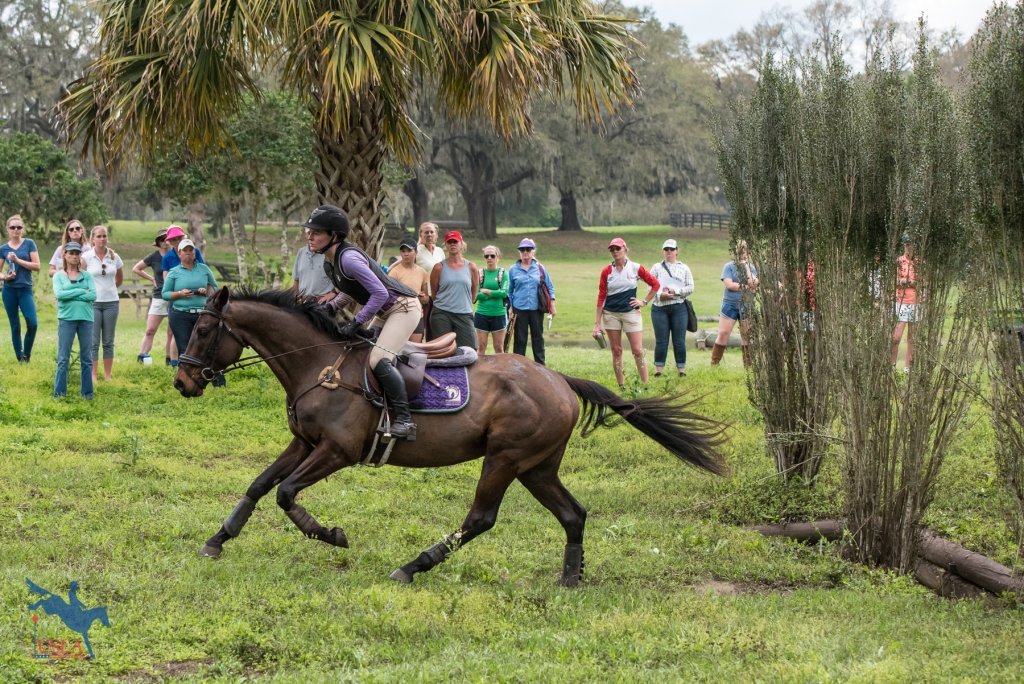
Meier focused on the importance of accuracy with his group. “I believe that you need to start teaching horses accuracy when they’re young,” he said. “Jumping two fences [in a row] is often not the question if the rider and horse are capable, it’s the line which lies in between that is the important factor.” Meier had riders work on jumping two fences set on a bending line by jumping the first jump straight, making a turn, and jumping the second fence straight. “We need to make sure that they come in slow and have time to see everything but they have to come with a good enough gallop.”
From the bending line exercises, the group moved onto a coffin, first having the horses school over just the ditch before stringing the whole exercise together. He explained that horses who spook at things like ditches or water can be trained not to fear these obstacles. “If we explain to them that it’s fun and very easy and we go step by step, they learn from scratch that it’s very easy and basic and they won’t have a problem with that.” The group moved from the coffin to the water, starting with a small drop before combining a small group of fences in, out, and around the water.

Meier closed the final session of the day acknowledging that while we are training young horses to be independent, it’s the responsibility of the rider to ensure that the horse has a positive experience. “Horses want to do good. I think the horses need to learn to walk on their own feet and open their own eyes and not rely too much on us, but still we need to always be able to give them a hand while making the situation as easy and as comfortable as possible.”
The Young Event Horse Symposium will take place tomorrow, beginning in the morning at the Ocala Jockey Club and moving to Longwood Farm South in the afternoon.
The USEA would like to thank EquiAppraisal, LLC for sponsoring this year’s Educational Symposium.
The USEA would also like to thank ICP, YEH, and FEH Sponsors who make these programs possible: Standlee Hay Company, Merck Animal Health, SmartPak, and Professional’s Choice.
About the USEA Instructors’ Certification Program
Instructors are essential to the training of riders and horses for safe and educated participation in the sport of eventing. The USEA Instructors’ Certification Program (ICP) was initiated in 2002 to educate all levels of eventing instructor with essential training principles upon which those instructors can continue to build throughout their teaching careers. ICP offers educational Workshops and Assessments by which both regular instructors, Level I through Level IV, Young Event Horse (YEH) instructors, and Young Event Horse professional horse trainers can become ICP certified. Additional Information about ICP’s goals, benefits, Workshops, and Assessments is available on the USEA website. Names and contact information for current ICP-certified instructors, YEH instructors, and YEH professional horse trainers are available on the USEA website as well, listed by ICP certificate level and type and by USEA Area.






















